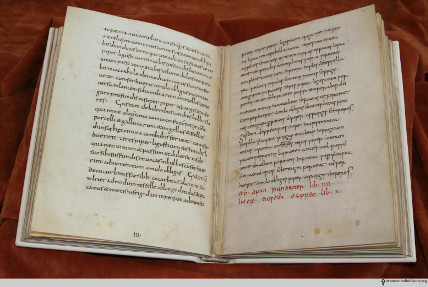Established in 1847, The New York Academy of Medicine is dedicated to ensuring everyone has the opportunity to live a healthy life. Through our original research, policy and program initiatives we provide the evidence base to address the structural and cultural barriers to good health and drive progress toward health equity. This work and our one-of-a-kind public programming are supported by our world class historical medical library and our Fellows program, a unique network of more than 2,000 experts elected by their peers from across the professions affecting health. The Academy's vast library collection, begun in 1847 and made available to the public in 1878, is now at the heart of the Academy’s Center for the History of Medicine. The Center, established in 2012 to preserve and promote the heritage of medicine and public health, regards the role of the humanities and the arts in the understanding of health and medicine as integral to its mission.
History of medicine
Among the most significant collections of medical history in the United States, NYAM’s collections include over 550,000 volumes, including approximately 32,000 volumes of rare books; 275,000 portraits and illustrations; over 1450 linear feet of manuscript material; and 400,000 pamphlets. Together, these materials are an extraordinary resource, providing insights into the formative texts and medical thinking in which contemporary practice is rooted, and demonstrate our attempts to understand our bodies, minds, and health across time and culture. Printed medical monographs from the 16th, 17th, and 18th centuries are a particular area of strength, and our collections tell the story of the growth of the Western medical tradition, its increasing specialization, and its global spread. Other areas in which the collections are strong include the development of medical practice and the medical profession in North America from colonial days to the present. Our rich New York materials document and describe the specific medical and public health challenges faced by growing urban centers. A large cache of secondary source materials connected to the history of medicine and public health and to the history of books and printing supports the research value of the collections. The archival and manuscript collections at NYAM contain a wide variety of materials, ranging from letters, diaries, student notes and hospital case books to the archival records of a variety of medical organizations. Among the manuscript highlights are a copy of de re culinaria, a 9th-century copy of an imperial Roman original and the oldest surviving western cookbook, a 14th-century Middle English manuscript copy of de Chauliac's book on surgery, and the archives of the New York Academy of Medicine itself.
Strengths of the collection include:
- 16th-, 17th- and 18th- century Western medical texts
- medical Americana and collections related especially to the history of medicine in New York
- culinary collections
- pamphlets
- anatomical atlases and works by and about Andreas Vesalius
- surgery
- women’s medicine
- epidemic diseases
- herbals and medical botany
- public health documents
- works by William Harvey
